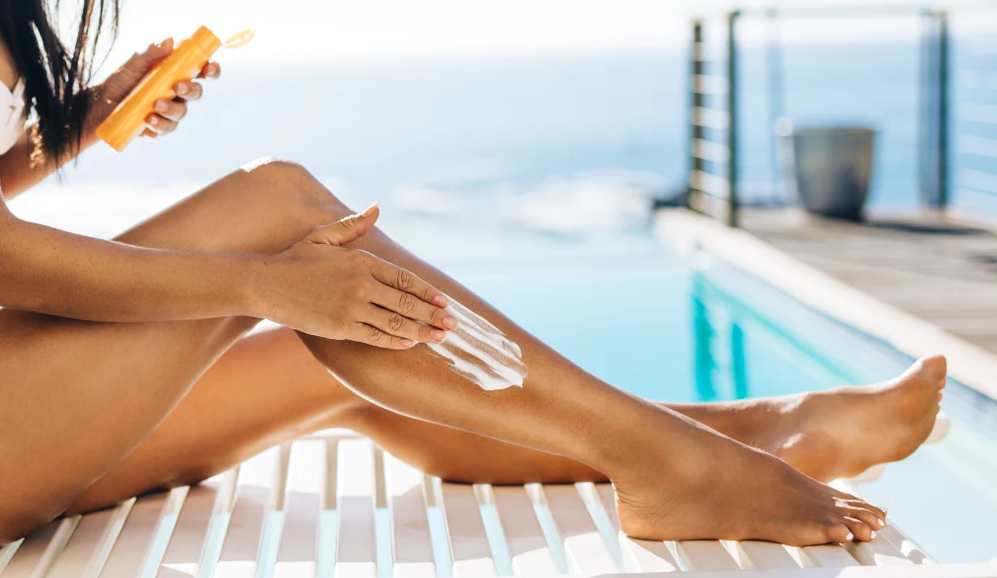Why use fake tan?
Fake tanners, sunless tanners or preparations used to imitate a tan are becoming much more popular as people are becoming more aware of the dangers of long-term sun exposure and sunburn. There are now several ways of achieving a tan without having to expose your skin to the sun, these include:
Stainers (dihydroxyacetone)
Bronzers (dyes)
Tan accelerators (tyrosine and psoralens)
Solaria (sunbeds and sunlamps)
What is dihydroxyacetone?
The sunless tanner dihydroxyacetone (DHA) is currently the most popular way of gaining a tan-like appearance without sun exposure as it carries fewer health risks than any of the other available methods. To date, it is the only active ingredient approved by the US Food and Drug Administration (FDA) for sunless tanning.
How does DHA work?
All effective sunless tanners contain DHA. It is a colourless 3-carbon sugar that when applied to the skin causes a chemical reaction with amino acids in the surface cells of the skin producing a darkening effect DHA does not damage skin as it only affects the outermost cells of the epidermis (stratum corneum).
What formulations of DHA are available?
There are many self-tanning preparations containing DHA on the market and many will claim to be the best formulation available. Consider the following points when deciding upon the preparation most suitable for you.
Concentrations of DHA can range from 2.5 to 10% or more (mostly 3-5%). This may coincide with product ranges that list shades as light, medium, or dark. A lower concentration (lighter shade) product may be better for new users as it is more forgiving of uneven application or rough surfaces.
Some formulations will also contain moisturisers. Users with dry skin will benefit from this.
Alcohol-based preparations will be more suitable for oily-skinned users.
DHA provides some protection against UV rays (UVA). To increase UV protection some products also include a sunscreen.
Alpha hydroxy acids promote the sloughing off of excess dead skin cells so should improve the evenness of colouration.
Other ingredients may be added to facilitate application or to make the colour last longer. Consult your pharmacist for advice.
How do you use DHA-containing preparations?
The final result obtained from DHA self-tanning preparations is highly dependent upon the individual’s application technique. Care, skill and experience are necessary when using these products. The following are some self-application tips to achieving a smooth and even look.
Prepare skin by cleansing then by exfoliation using a loofah; this will avoid uneven application of colour.
Wipe skin down with hydroalcoholic, acidic toner, as this will remove any alkaline residues from soaps or detergents that may interfere with the reaction between DHA and amino acids.
Moisturise the area first, being careful to include the bony parts of the ankles, heels and knees.
Apply to skin in thin layers wherever you want colour, less to thicker skin, as the colour is maintained longer in these areas.
To avoid uneven darkening on areas such as the elbows, ankles and knees, remove excess cream over bony prominences with a wet cotton pad or damp flannel.
Wash hands immediately after application to avoid tanned palms. Alternatively, wear gloves to apply.
To avoid staining of clothes, wait 30 minutes for the product to dry before putting on clothes.
Don’t shave, bathe, or swim for at least an hour after applying the product.
Reapply regularly to maintain colour.
Tanning salons, spas and gyms may offer professional application of sunless tanning products.
Lotion can be applied by an experienced technician.
A solution can be airbrushed onto the body.
Step into a sunless tanning booth for a uniform full-body application.
Be careful to cover eyes, lips and mucous membranes to prevent swallowing or inhaling the DHA-containing mist.
Post time: Jun-20-2022
